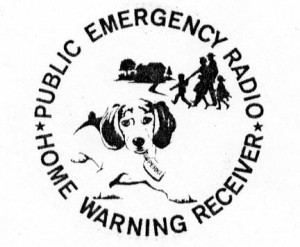Back in the cold war days, the federal government took emergency warnings quite seriously. So much so that they spent about $2 million in 1972 to build a LF (low frequency) radio station WGU-20, in Maryland designed to integrate into the public warning system. This was known as the “Last radio station” because it was designed to operate after nuclear armageddon. Using the first all-solid-state AM transmitter designed by Westinghouse, the station transmitted on 179 kHz (power 50 KW) with a loop that stated:
“Good evening. This is WGU-20, a defense civil-preparedness agency station, serving the east-central states with emergency information. Eastern Standard Time seventeen hours, twenty minutes, twenty seconds.”
The greeting would change to “Good Morning…” or “Good afternoon…” as appropriate.
One small problem arose from this system, no one had long-wave receivers. The government attempted to persuade manufacturers to market, and the public to purchase radios that would only receive periodic tests or that they were likely going to die in the next 15 minutes. It was a tough sell from the start.
Military planners decided that they might integrate the DIDS (Decision Information Distribution System) information gained from surface-to-air radar that would give the approximate impact areas of incoming ballistic missiles. The idea was, the public would then know which areas to “avoid.” It may have appealed to the military mind, but most others didn’t quite see the value in it, especially since reaction times would have been 10 minutes or less.
Plans were to build several of these radio stations throughout the US operating on Low Frequency, which would have replaced the EBS over-the-air daisy chain system that remains in effect today with the current EAS. Unfortunately, the public never bought into the concept, and around 1990 or so, WGU-20 was turned off for good. The nearest thing was to have to it today is NOAA weather (or all hazards) radio.
EBS and EAS have never had to work in a time of emergency and if the circumstances are dire enough for someone to attempt to activate EAS, it is very likely the system would fail.

